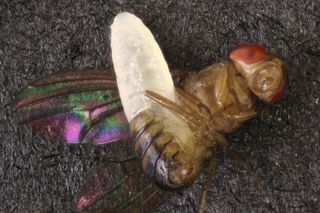Periyar’s 146th birth anniversary celebrated recently in chennai.

Tamil Nadu celebrates Periyar’s birth anniversary as 'Social Justice Day' since 2021 whereas the World Day of Social Justice is 20th Feb.
Reference
The Indian Express | Periyar’s 146th birth anniversary
There has been an upsurge in number of cellulitis cases in Karimnagar, Telangana.
References
Festival Karma starts with great pomp in Jharkhand recently.
Reference
The Indian Express | Karam Festival
New Parasitoid Wasp Species, Syntretus perlmani recently discovered by Researchers in Mississippi in Eastern US.

Reference
Live Science | Syntretus perlmani
Patent applications for a drug called lenacapavir have shown to be capable of virtually eliminating new HIV infections through sex opposed in India.
HIV/AIDS
|
UNAIDS |
|
Reference